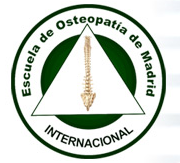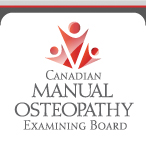A meta-analysis of randomized control trials of home-based secondary prevention programs for coronary artery disease
- Alexander M. Clarka
- Mark Haykowskya
- Jennifer Kryworuchkob
- Todd MacClurea
- Jess Scotta
- Marie DesMeulesc
- Wei Luoc
- Y. Lianga
- Finlay A. McAlistera
- aUniversity of Alberta, Edmonton, Alberta
- bUniversity of Ottawa, Ottawa, Ontario
- cPublic Health Agency Canada, Ottawa, Canada
- Alexander M. Clark, Level 3 CSB, Faculty of Nursing, University of Alberta, Edmonton, AB, T6G 2G3, Canada Tel: + 1 780 492 8347; fax: +1 780 492 2551; e-mail:alex.clark@ualberta.ca
Abstract
Background A variety of different types of secondary prevention programs for coronary heart disease (CHD) exist. Home-based programs have become more common and may be more accessible or preferable to some patients. This review compared the benefits and costs of home-based programs with usual care and cardiac rehabilitation.
Methods A meta-analysis following a systematic search of 19 databases, existing reviews, and references was designed. Studies evaluated home-based interventions that addressed more than one main CHD risk factor using a randomized trial with a usual care or cardiac rehabilitation comparison group with data extractable for CHD patients only and reported in English as a full article or thesis.
Results Thirty-nine articles reporting 36 trials were reviewed. Compared with usual care, home-based interventions significantly improved quality of life [weighted mean difference: 0.23; 95% confidence interval (95% CI): 0.02-0.45], systolic blood pressure (weighted mean difference: − 4.36mmHg; 95% CI: − 6.50 to − 2.22), smoking cessation (difference in proportion: 14%; 95% CI: 0.02-0.26), total cholesterol (standardized mean difference: − 0.33; 95% CI: − 0.57 to − 0.08), and depression (standardized mean difference: − 0.33; 95% CI: − 0.59 to − 0.07). Effect sizes were small to moderate and trials were of low-to-moderate quality. Comparisons with cardiac rehabilitation could not be made because of the small number of trials and high levels of heterogeneity.
Conclusion Home-based secondary prevention programs for CHD are an effective and relatively low-cost complement to hospital-based cardiac rehabilitation and should be considered for stable patients less likely to access or adhere to hospital-based services. Eur J Cardiovasc Prev Rehabil 17:261-270 © 2010 The European Society of Cardiology










 Master PCMH Criteria with Upcoming Webinars
Master PCMH Criteria with Upcoming Webinars







 The American Osteopathic Association (AOA) is the representative organization for the over 70,000 osteopathic physicians (DOs) and 18,000 osteopathic medical students in the United States. The organization promotes public health, encourages scientific research, serves as the primary certifying body...
The American Osteopathic Association (AOA) is the representative organization for the over 70,000 osteopathic physicians (DOs) and 18,000 osteopathic medical students in the United States. The organization promotes public health, encourages scientific research, serves as the primary certifying body...










 3:14
3:14
 Daniel Enriquez de Guevara
Daniel Enriquez de Guevara













.jpg)


















0 comentarios:
Publicar un comentario